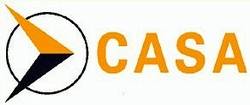Bell Helicopter Textron Canada (BHTC) 206 and Agusta Bell 206
Series Helicopters
AD/BELL 206/153 Amdt 1 Tail Rotor Blade Trailing Edge
Skin Cracks 7/2004 TX
 Applicability: Model 206A
and 206B helicopters, equipped with tail rotor blade, part numbers
206-016-201-131 or 206-016-201-133, and Model 206L series
helicopters equipped with tail rotor blade, part number
206-016-201-131; with serial numbers identified in Model 206A and
206B Alert Service Bulletin (ASB) 206-04-100 Revision A, or Model
206L Series ASB 206L-04-127 Revision A, as applicable. Agusta-Bell
Model AB206A/B helicopters, equipped with tail rotor blades, part
numbers 206-016-201-131 or 206-016-201-133; with serial numbers
identified in Model AB206A/B Alert Bolletino Technico (ABT)
206-237.
Applicability: Model 206A
and 206B helicopters, equipped with tail rotor blade, part numbers
206-016-201-131 or 206-016-201-133, and Model 206L series
helicopters equipped with tail rotor blade, part number
206-016-201-131; with serial numbers identified in Model 206A and
206B Alert Service Bulletin (ASB) 206-04-100 Revision A, or Model
206L Series ASB 206L-04-127 Revision A, as applicable. Agusta-Bell
Model AB206A/B helicopters, equipped with tail rotor blades, part
numbers 206-016-201-131 or 206-016-201-133; with serial numbers
identified in Model AB206A/B Alert Bolletino Technico (ABT)
206-237.
Requirement: Part A: Identification of Affected
Tail Rotor Blades
1. Verify if the rotorcraft is equipped with tail rotor blades
identified in the "Component Affected" or "Helicopters Affected"
section of the applicable ASB or ABT, listed in the Applicability
part of this Directive. If the rotorcraft is equipped with an
affected blade, enter the part number and serial number into the
journey logbook. If not equipped with an affected blade, indicate
that the rotorcraft is not equipped with blades affected by this
Directive.
2. If any spare blade is listed in the “Component
Affected” or “Helicopters Affected” section of
the applicable ASB or ABT, the blade is to be identified with a
“Blue Diamond” decal as per Part II, of the applicable
ASB or ABT.
Part B: Initial and Recurring Check for Tail Rotor Blade
Cracks
Check the affected tail rotor blade for cracking in accordance with
the instructions in Part I of the applicable ASB or ABT listed in
the Applicability part of this Directive. If a crack is found,
before further flight, replace the affected blade.
Part C: Schedule 100 hour / Annual Inspection For Tail Rotor Blade
Cracks
Perform a detail visual inspection of the tail rotor blade using a
magnifying glass, in accordance with Part II of the applicable ASB
or ABT listed in the Applicability part of this Directive. If a
crack is found, before further flight, replace the affected
blade.

Note: Transport Canada AD CF-2004-05
refers.
Compliance: Part A.1. Before further flight
after 6 May 2004, unless already accomplished.
Part A.2. Before the installation of a spare blade.
Part B. Before further flight after 6 May 2004, unless the initial
inspection is already accomplished. Repeat thereafter at intervals
specified in applicable ASB or ATB.
Part C. At the next, and recurring, 100 hour scheduled inspection
or annual inspection after 6 May 2004, whichever occurs first. This
Directive shall be entered on the Maintenance Release as
maintenance required. The Requirement Part A.1.action, and
Requirement Part B. "Recurring 3-Flight Hour Check," identified in
the applicable ASB or ABT listed in Applicability part of this
Directive, may be performed and certified by the Pilot in Command
who has been trained to do the Requirement Part A.1. action and
Requirement Part B. inspection by an appropriately qualified
person. In this case, a copy of the applicable ASB or ABT and this
Directive is to be carried in the aircraft. This Amendment becomes
effective on 6 May 2004.
Background: Transport Canada received reports
of three occurrences of skin cracks originating near the tail rotor
blade trailing edge balance weight. Two of the occurrences resulted
in loss of the weight and a strip of material along the trailing
edge, leading to an imbalance, which caused fracture of three of
the four tail rotor gearbox attachments. One of these occurrences
resulted in the gearbox shifting that caused failure of the drive
shaft, which resulted in loss of yaw control.
 ANN's Daily Aero-Term (12.08.25): Decision Altitude (DA)
ANN's Daily Aero-Term (12.08.25): Decision Altitude (DA) ANN's Daily Aero-Linx (12.08.25)
ANN's Daily Aero-Linx (12.08.25) NTSB Final Report: Piper PA-31T3
NTSB Final Report: Piper PA-31T3 Aero-News: Quote of the Day (12.08.25)
Aero-News: Quote of the Day (12.08.25) Airborne-Flight Training 12.04.25: Ldg Fee Danger, Av Mental Health, PC-7 MKX
Airborne-Flight Training 12.04.25: Ldg Fee Danger, Av Mental Health, PC-7 MKX




